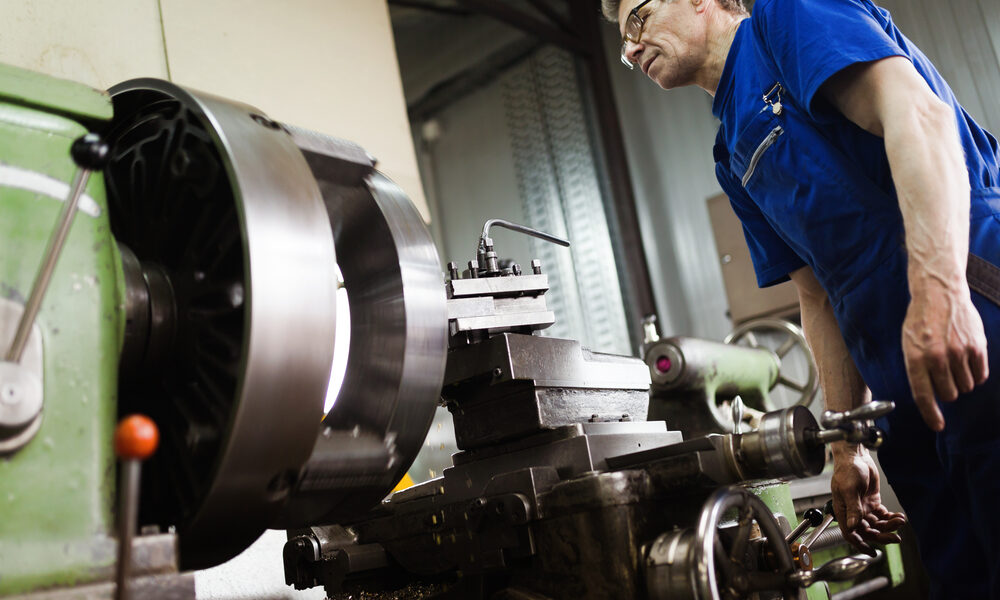Regular maintenance is a critical aspect of any manufacturing operation that utilizes stamping dies for cutting, forming, or shaping various metal materials. Metal stamping dies are typically made of high-strength materials that are designed to withstand the rigors of repeated use, but they still require regular maintenance to ensure they operate at optimal levels.
In this guide, we’ll explore the best practices for die maintenance, including tips, techniques, and strategies that will help you get the most out of your dies and keep your manufacturing operation running smoothly.
What Makes a Well-Designed, High-Quality Die?
Whether you’re choosing a standard die or building a custom one, there are a few main attributes to look for in the die itself, as well as its associated tools.
- Strong material — Tool steel and high-speed steel, including those made from powdered metallurgy techniques, are popular options.
- Consistent results — Dies should yield minimal variations per finished product.
- Tight tolerances — Tool inserts should have tight tolerances for precise results.
- Repeatable design — Die designs should be easy to duplicate and promise similar end products.
By keeping each of these factors in mind, you can achieve consistent end-product quality, low waste, and reduced material and labor costs. However, even the most well-designed dies require some maintenance every now and then to maintain good operating conditions.
How to Determine If Die Maintenance Is Needed
Proper die maintenance not only extends the life of the die but also improves the quality of manufactured products and reduces downtime caused by unexpected breakdowns. Ideally, your shop should have a preventative maintenance schedule so that no large production problems arise. But at the very least, here are a few telltale signs of die or tool wear to look out for, as they indicate maintenance is past due.
- Loose fasteners and screws
- Missing or broken components
- Debris or galling buildup
- Poor or uneven clearances and tolerances
- Worn cutting edges
- Chips and cracking
- Burrs
- Out-of-spec hole dimensions
4 Most Common Types of Die Maintenance
If you’ve noticed any of the above issues with your die or its components, it’s time for maintenance. Below are four common types of die maintenance that should fix whatever issue you encounter.
1. Cleaning
If your die is covered in debris, such as metal slivers or buildup of stamping lubricants, a simple cleaning may do the trick and restore it to its original operating condition. There are many ways to clean a die or stamping tool, including steam, chemical solvents, gasoline, brake cleaner, and more. Ask your press lube supplier or precision tool manufacturer about their recommendation for your specific product and situation.
2. Sharpening
After a number of cycles and a certain amount of time, cutting sections and punch edges can experience normal wear. Sharpening can help. To sharpen, when possible, the working faces of punches and buttons should be ground on a surface grinder, using the appropriate wheel with caution, so as not to introduce too much heat. Custom die sections are often welded and reworked by hand, so they continue to cut smoothly.
3. Shimming
To make sure your die system maintains proper timing, or to compensate for length lost from sharpening, you may consider adding shims to each die section. A few things to keep in mind while doing this:
- Remove debris and burrs from shims prior to installation
- Place and space shims appropriately
- Use the correct number of shims to achieve the proper height
- Ensure adequate clearance for fasteners
4. Tool Replacement
If any of your die tools are past the point of repair or maintenance, it’s best to replace them. If you find that you’re consistently replacing tools due to poor performance or premature wear, consider contacting a reputable manufacturer who has a product specialist on call.
How to Reduce Die Maintenance Costs & Hassle
Die maintenance will always be an important practice for extending longevity and ensuring high-caliber performance. However, there are ways to reduce maintenance efforts, while also ensuring your die and its tools last a long time.
- Purchase high-quality dies and components — As mentioned above, higher quality products often mean less maintenance and replacement is needed.
- Partner with a trusted manufacturer — Often, the lowest-cost option is actually NOT the cheapest option in the long run. If you constantly need to repair or replace components, find a reputable manufacturer with great customer service can help.
- Use the right tools for the right applications — You may need custom or specialty tools of various sizes, strengths, or materials. Your purchase will be well worth the investment.
- Know when to use advanced tooling — Specific applications (e.g. high temperature or high pressure) require more toughness, wear resistance, or compressive strength than standard components can handle.
Purchase Best-in-Class Die Components at Moeller Precision Tool
Invest in high-quality die components from Moeller Precision Tool. As a trusted partner for standard and special die components, we’re proud to deliver precise, tight-tolerance tools to customers all over the world. Explore our products and request a quote today.

